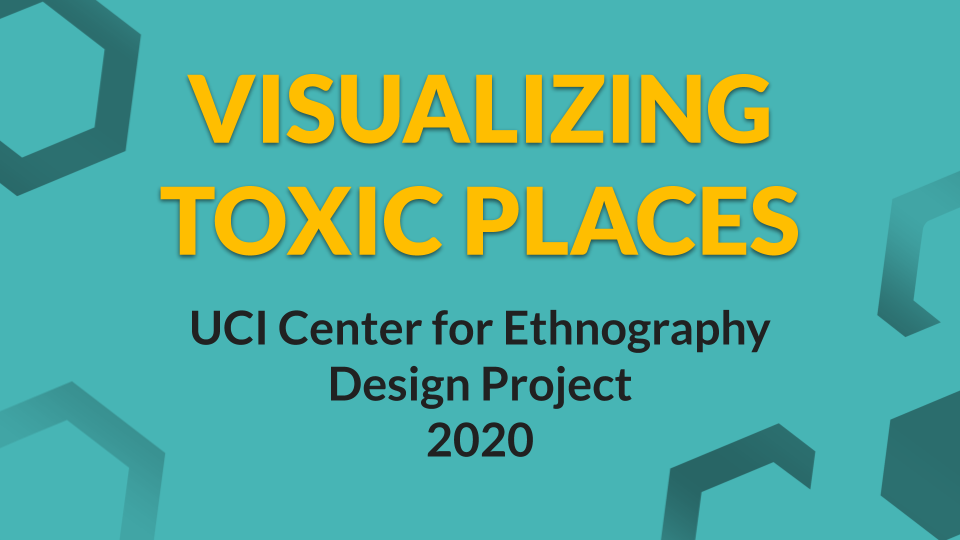
CITE AS
Fortun, Kim, James Adams, Tim Schütz, George Marcus eds. (2020) VTP Project Page. In Visualizing Toxic Places. Center for Ethnography. February 10.
The Visualizing Toxic Places Project Design Group is co-edited by Tim Schütz, James Adams and Kim Fortun, in consultation with George Marcus, Director of the Center for Ethnography. Other Design Group members are Monique Azzara, Mike Fortun, Ruth Goldstein, Oviya Govindan, Evan Hepler-...Read more
The Center for Ethnography supports continuing innovation in the practice, expression and theorization of ethnography, the signature method and genre of cultural anthropology with ever widening uptake in other disciplines and beyond the...Read more
Visualizing Toxic Places (VTP) is a collaborative experiment with new ethnographic methods and modes of expression. The project is designed to explore "toxicity" in many guises (chemical, discursive, gendered, mediated, and others), "place" (as an analytic focus in ethnography, in experience, as site of governance, and so on), and ways "toxic places" can be conveyed and analyzed through diverse modes of visualization (expanding how visualization in ethnography is conceived and practiced).
The digital workspace for the project -- on the Center for Ethnography’s instance of the Platform for Experimental Collaborative Ethnography -- will support both local and remote participation. End products will include a digital photo essay collection, gallery installations, journal publications and possibly a book.
Project participants will build digital photo essays (with images and extended captions) that convey toxic dynamics in the “place” they are concerned with. Careful selection and explication of images will be key. Captions (200-400 words) will draw out understanding of both toxics and visualization in ethnography. Images and captions will be shared and collaboratively analyzed. Images don’t need to be representative -- they can “illustrate” the analysis metaphorically, through juxtaposition, or many other means. Images can be found (in the field, in fine arts, in advertising, and so on) or created (through photography, illustration, and so on).
Visualizing Toxic Places is designed to advance five key concepts. The design ethnography process -- moving from place proposals to digital photo essays to a gallery installation -- will provide data for this conceptual work. Cumulatively, the project will address these research questions:...Read more
The project extends from the Center for Ethnography’s 2018-2019 collaborative design project, Visualizing Toxic Subjects (which also revolved around digital photo essays and a gallery installation). Also see this blog post about the project.
The Platform for Experimental, Collaborative Ethnography (PECE) is a free and open source (Drupal-based) digital platform that supports multi-sited, cross-scale ethnographic and historical research. PECE provides a place to archive and share primary data, facilitates analytic collaboration, and...Read more